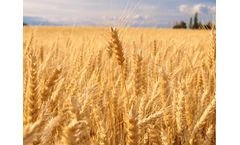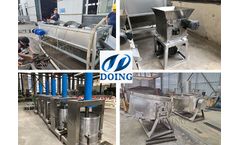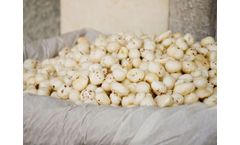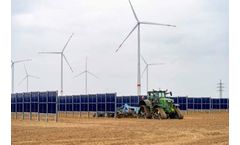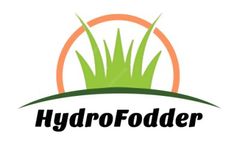Refine by
Harvesting Articles & Analysis
884 news found
As Africa’s largest cassava producer (over 60 million metric tons annually), Nigeria relies on cassava for calories, income, and rural employment. Yet, post-harvest losses exceeding 40% and labor-intensive traditional processing severely limit its potential. ...
Whether you're a farmer preparing for harvest, a seed processor, or an equipment dealer, you can count on: Reliable availability Fast order fulfillment Consistent production and delivery timelines From compact ISM-3 models to high-capacity separators — your grain cleaning solution is already waiting for you. ...
In a recent NUTRI-CHECK NET webinar, ADAS crop physiologists Dr Sarah Kendall and Dr Tamara Fitters shared how grain analysis and post-harvest reviews can play a pivotal role in refining nutrient strategies for future seasons. ...
Declining sponsorship has meant that 2025 will be the last harvest analysed by the two largest YENs – cereals and oilseeds. The YENs for peas and beans, facilitated by ADAS and PGRO, will continue beyond harvest 2025. Professor Roger Sylvester-Bradley, the founder of YEN and Head of Crop Performance at ADAS explained: “The YEN has been a ...
Cassava serves as a staple crop for over 500 million Africans, yet post-harvest losses exceed 30% due to inadequate processing infrastructure. ...
These varieties are specifically bred to be resistant to common diseases that can decimate cassava crops, ensuring a more stable and abundant harvest. Moreover, they boast a higher starch content, which directly translates to more garri per tuber. ...
Key Challenges & Solutions Perishability: Cassava must be processed within 48 hours of harvest to prevent spoilage. Energy Costs: Use efficient roasting machines, such as gas-powered ones, to reduce dependency on firewood. ...
JC 9465 has improved safety and increased production in various agricultural applications that use post-harvest wash systems and hydro-coolers to control cross-contamination and spoilage. ...
Octopus Energy’s generation arm is powering ahead with its green energy push in France, striking four deals in solar and wind energy to power 150,000 homes.These latest deals have propelled Octopus past a significant milestone, with the company now managing 500 MW of green power across over 30 operational and under-construction wind and solar farms across France.France is Octopus’ largest clean ...
“OxySorb oxygen absorbers can help brands and exporters meet international quality standards while reducing post-harvest losses.” A Thriving Market with Rising Entrepreneurial Interest The Makhana industry is witnessing a surge in investment and innovation. ...
Bhd. is a prominent distributor of pesticides and harvesting tools, serving the Malaysian market. With a strong focus on providing tailored solutions for plantation management, the company plays a critical role in supporting sustainable agricultural practices. ...
This ensures that more seeds are retained, resulting in higher yields and reduced losses during harvest. BLOCSAL®: For farms dealing with saline soils, BLOCSAL prevents sodium accumulation and promotes potassium uptake. ...
Algae are extraordinary organisms, part of a world as ancient as it is diverse, existing for billions of years. Belonging to various kingdoms of life, they can be found in both marine and freshwater environments and range from microscopic unicellular algae, such as diatoms, to towering kelp forests, extending tens of meters in length. One of their most fascinating traits is their ability to ...
In the dynamic landscape of agriculture and food production, resilience isn’t just a buzzword – it is essential for survival and success. Businesses across the globe face many challenges, from fluctuating market conditions to unpredictable weather patterns. At Clarke Energy, we can offer cutting-edge solutions: microgrids that support not only environmental stewardship, but also ...
Among other things, this form of cultivation enables healthy plant growth with high yields and more predictable harvest times.RWE intends to carry out important applied research at its demonstration plant. ...
As reported by the Independent, wine production is already being affected by erratic rainfall, drought and more frequent and more extreme heat, with harvests now being shifted to warmer parts of the year. This is helping drive the spread of pests and new diseases, as well as affecting the quality of the wine and resulting in an increase in the drink’s alcohol levels. ...
Labor costs can range from $1,000 to $4,000 per month depending on the scale of the operation. Harvesting and Processing: Labor for harvesting and preparing the fodder for livestock is another ongoing cost, potentially adding $500 to $2,000 monthly. 3. ...
This will usually take between 6-7 days depending on the temperature in the room and irrigation times. When harvesting, cause it is heavy, roll fodder up or cut it into piece to easily managed. ...
Growth Phase: Trays are kept in a controlled environment where they receive water and nutrients regularly. Harvesting: Within 7-10 days, the fodder mat reaches a suitable height and is harvested for feeding livestock. ...
While we understand the excitement of spring, planting into wet, cold soils can be detrimental and lead to disappointment at harvest. Waiting an extra day or two for dry soil can lead to better rooting conditions and enable a crop to take full advantage of Maximum Farming System adoption. ...



